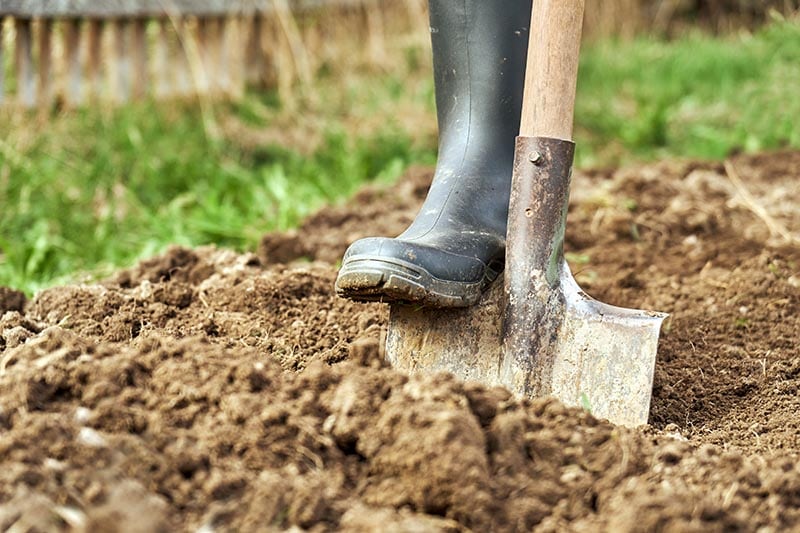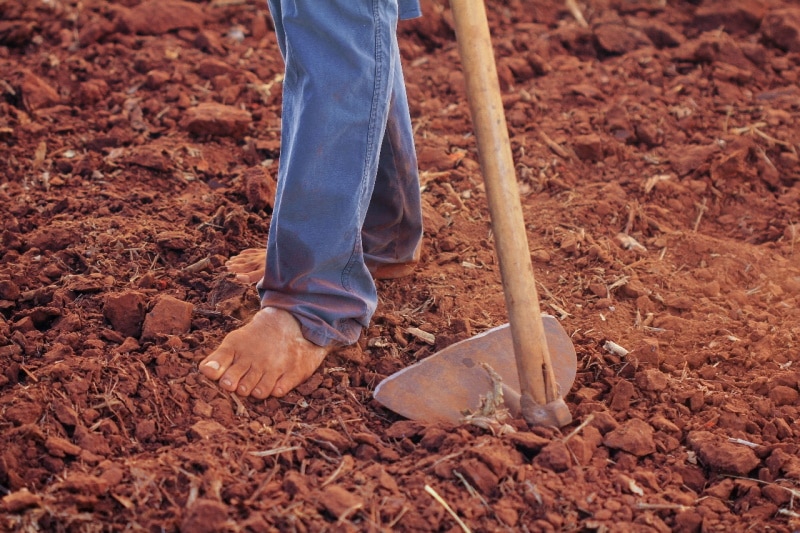Is Clay Soil Acidic? Facts & FAQ
-
Pete Ortiz
- Last updated:

Clay soil, formed from the weathering of rocks and minerals over time, is an important component of healthy soils. Clay is also known for its heavy weight and tendency to become hard when dry. However many gardeners and agricultural producers want to know whether clay soil is acidic. Most clay soil is alkaline, not acidic.
However, its pH level can vary depending on the environment and other factors. To better understand clay soil’s acidity levels, let’s look at what makes up this type of soil and how it affects plant growth.
 Understanding Clay Soil
Understanding Clay Soil

Clay soil comprises very small particles, making it heavy and dense. These tiny particles contain different kinds of minerals that can affect the pH level. Clay soil typically has a higher pH than sandy soil, meaning it is more alkaline than acidic.
What’s more, the pH levels in clay soil can vary depending on where the clay came from and the amount of mineral material it contains. For example, clay soil found in an area with high concentrations of limestone can be much more alkaline than other clay soil types.
What pH Is Clay Soil Usually?
Clay soil can have a wide range of pH levels, but it is generally more alkaline than acidic. The pH level of clay soil varies depending on where the clay came from and the mineral content. However, most clay soils will have a pH level between 7.5 and 10, which is slightly on the alkaline side.
What Type of Soil Is Acidic?
For a soil type to be acidic, it needs to have a pH value under 5.5. Clay soil tends to be very alkaline, and its ability to maintain its pH is greater due to clay’s resistance to leaching. So, while clay soils can be acidic, they are not necessarily so in most cases.
However, the exact acidity of clay soil will vary depending on various factors, such as the climate in which it is located and how long it has been exposed to water and other weathering elements.
To be certain that you’re using a type of soil high in acidity, you’re better off sticking to sandy soils, soils with a lot of organic matter, and peat. These soils tend to be more acidic, so you can use them for gardening plants that require acidity in their soil.
It’s important to note that even if your soil is not naturally acidic, it can easily become so by adding fertilizer or chemical additives. Keep reading to find out how to achieve this.
How Clay Soil Affects Plant Growth
The pH level of clay soils can have a major impact on plant growth. Plants that prefer acidic soil, such as azaleas, rhododendrons, and blueberries, need soil with a pH level of 6.0 or below to thrive. Clay soils with a higher pH level can become too alkaline for these plants and stunt their growth.
On the other hand, some plants prefer slightly acidic conditions that are provided by soil types with a lower pH level. As such, plants like onions and potatoes may struggle in soil that is too alkaline.
How Can I Make My Clay Soil More Acidic?

Making clay soil more acidic is a challenge that gardeners face, especially when they want to grow acid-loving plants. Adding organic matter such as compost or manure can help increase the acidity of your clay soil. Applications of sulfur and/or iron sulfate can also lower pH levels in clay soils, making them more acidic.
For best results, test your soil before making any changes. You may also want to use a pH-lowering fertilizer to make sure your clay soil is sufficiently acidic for acid-loving plants. Additionally, adding organic mulch can help maintain the appropriate levels of moisture and acidity in your soil.
Some experts recommend using gypsum, as it may help to improve the drainage of your clay soil and make it more suitable for acid-loving plants. At the same time, gypsum can pull salt out of the ground while adding calcium, thus making your soil more acidic.
Finally, be sure to check with your local garden center or nursery for advice on how to make clay soil more acidic and which products are best suited for your specific situation. With proper care and maintenance, you can create an ideal environment in your garden for acid-loving plants.
Conclusion
As you can see, you’re better off avoiding clay soil if your plants require acidity to thrive. If you must use clay soil, the best option is to work organic matter into it and add sulfur or other acidic amendments.
Doing so will help make the soil more acidic and create an environment where plants can grow better. Additionally, if your plants have already been planted in clay soil, adding mulch or compost around the plants can help to maintain the acidity level. In any case, testing your soil’s pH regularly will be key in ensuring that your plants are getting all the nutrients they need.
Featured Image Credit: Georgy Dzyura, Shutterstock
Contents

 Understanding Clay Soil
Understanding Clay Soil